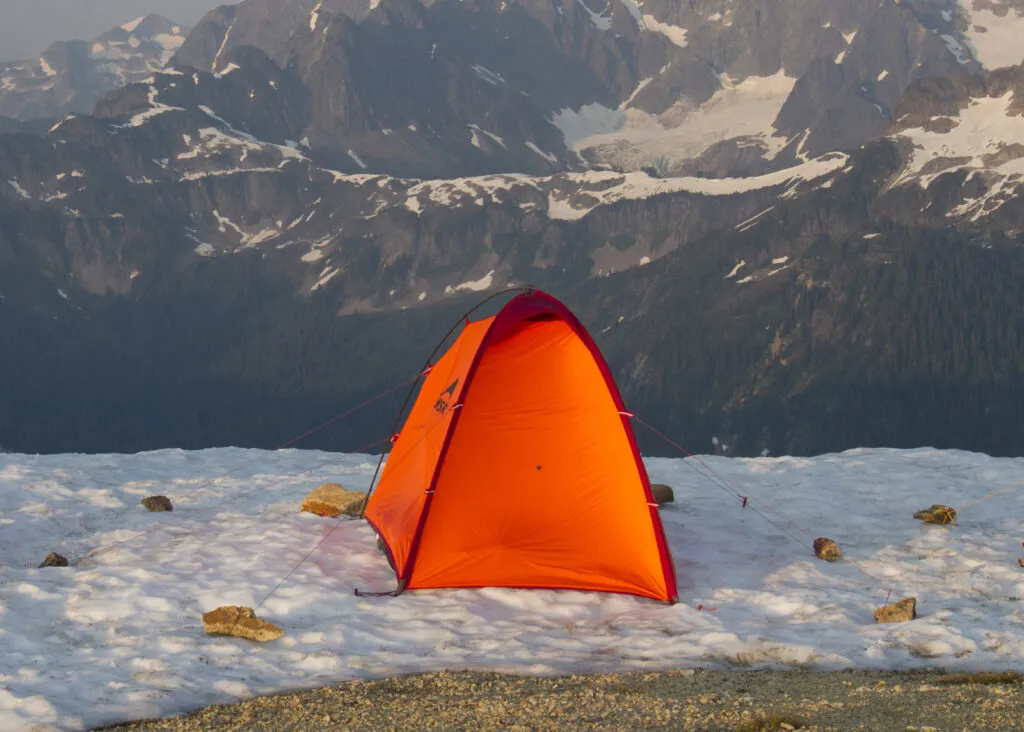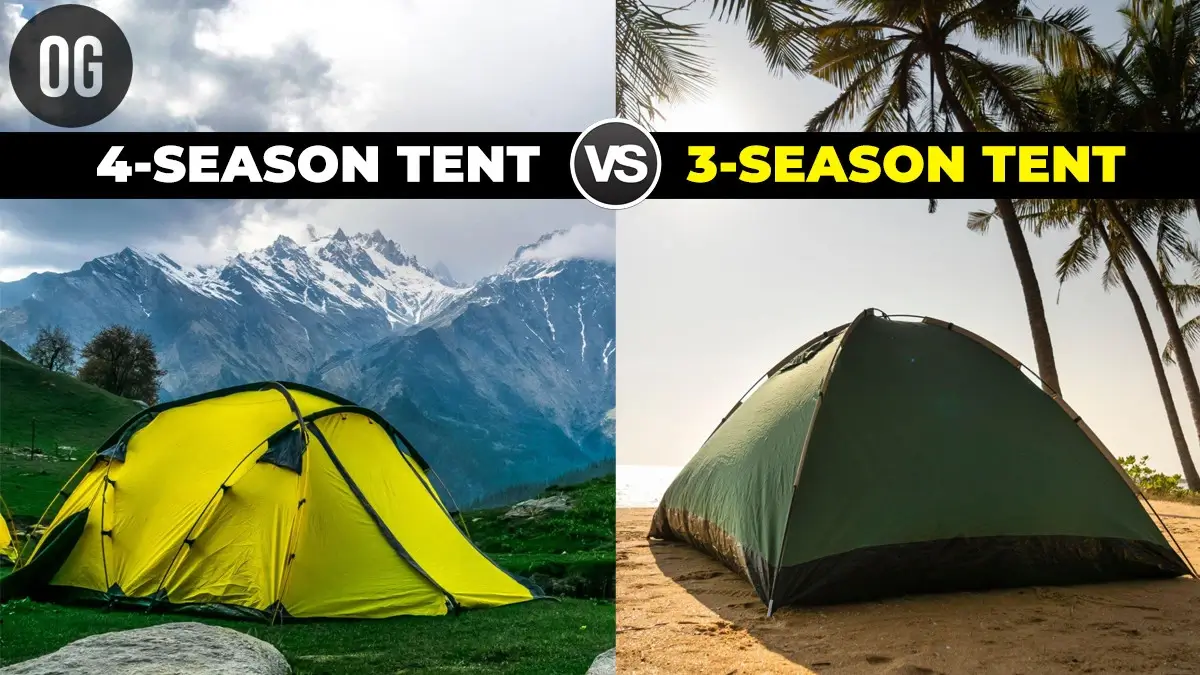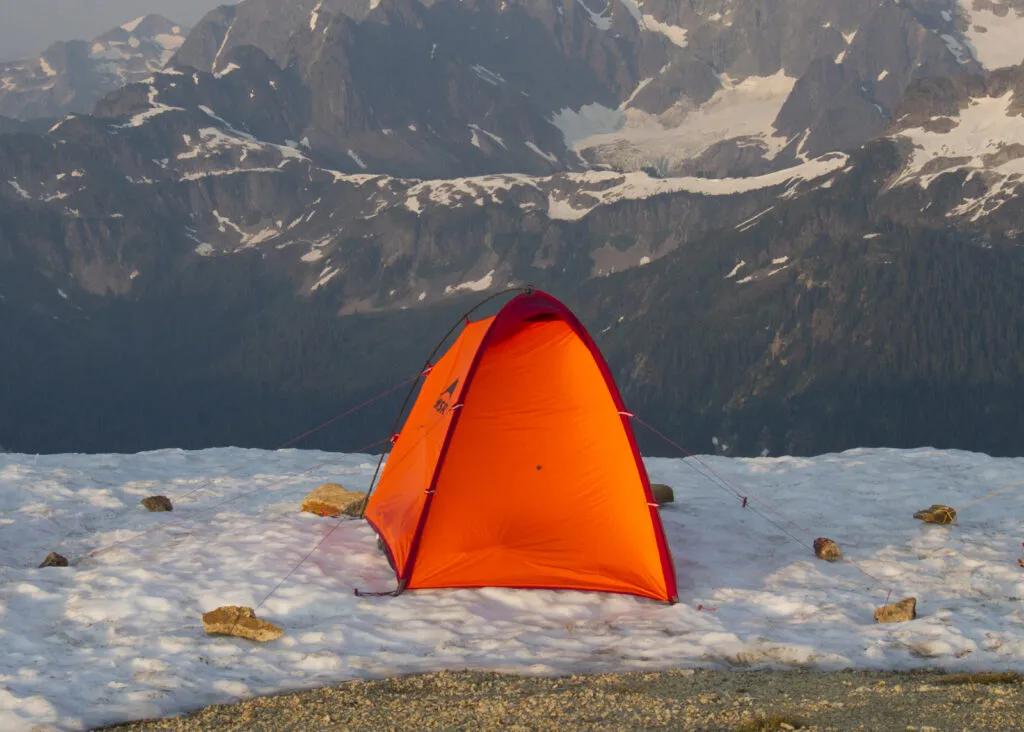
3 Season Tent vs 4 Season Tent: The Ultimate Guide to Choosing Your Perfect Camping Shelter
After 15 years of camping in everything from scorching desert heat to bone-chilling mountain blizzards, I've learned that choosing between a 3 season tent vs 4 season tent can make or break your outdoor adventure. This comprehensive guide will help you understand the critical differences, when to use each type, and which specific models deliver the best value for your camping needs. Welcome to Nature Guests, where expert outdoor advice meets real-world experience.
Understanding the Basics: What Makes a Tent 3-Season vs 4-Season

When I first started backpacking in the Cascade Mountains of Washington, I made the classic mistake of thinking that a tent's season rating was simply about the time of year you'd use it. After spending a miserable night in October with my lightweight 3-season tent collapsing under unexpected wet snow, I learned that the 3 season tent vs 4 season tent debate is really about weather conditions, not calendar months.
A 3-season tent is designed for spring, summer, and fall conditions in most climates. These tents prioritize weight savings, ventilation, and ease of setup. They're built to handle moderate rain, wind, and light snow, but they're not engineered for the extreme conditions that winter can throw at you. Most 3-season tents feature significant mesh paneling for ventilation, lighter fabric weights, and simpler pole structures.
Four-season tents, on the other hand, are mountaineering workhorses designed to withstand heavy snow loads, fierce winds, and extreme cold. They sacrifice some ventilation and weight savings for superior structural integrity and weather protection. As someone who's spent dozens of nights in both types across various conditions, I can tell you that understanding when you truly need that extra protection is crucial for both safety and comfort.
Pro Tip from Experience
I've found that the most important factor isn't the season you're camping in, but the specific weather conditions you expect to encounter. I've used 4-season tents in July above treeline in Colorado, and 3-season tents in February in Southern California deserts.
Key Differences: 3 Season Tent vs 4 Season Tent Construction
3-Season Tent Features
- Mesh Panels: Extensive ventilation for airflow
- Lighter Materials: 20D-30D fabrics for weight savings
- Simplified Poles: Fewer, lighter aluminum poles
- Higher Fly: Rainfly doesn't extend to ground
4-Season Tent Features
- Solid Walls: Minimal mesh, maximum protection
- Heavy-Duty Fabrics: 40D+ materials for durability
- Robust Structure: More poles, stronger connections
- Full Coverage: Rainfly extends to ground level
The Real-World Performance Gap
During a memorable trip to Mount Rainier's Muir Snowfield, I witnessed firsthand why the 3 season tent vs 4 season tent distinction matters so much. Our group had a mix of both tent types, and when a surprise storm brought 40+ mph winds and heavy snow overnight, the results were dramatic. The 4-season tents stood firm like little fortresses, while two of the 3-season tents collapsed under the snow load and wind pressure.
However, it's not always about extreme conditions. I've also experienced the opposite scenario during summer backpacking trips in the Sierra Nevada, where my 4-season tent felt like a sauna while my partner's 3-season tent provided comfortable, well-ventilated sleeping conditions. Understanding these trade-offs is essential when making your decision.
When to Choose Each Type: Temperature Ranges and Conditions
Understanding Temperature Ranges
One of the most common questions I get is about 3-season tent temperature ranges. While tents don't provide insulation like sleeping bags, they do create a microclimate that affects your comfort and safety.
Based on my extensive field testing, 3-season tents work well down to about 20°F (-6°C) in dry conditions, while 4-season tents can handle temperatures well below 0°F (-18°C) when properly used.
Choose a 3-Season Tent When:
- Camping in mild to moderate weather conditions (above 20°F)
- Weight is a primary concern for backpacking trips
- You prioritize ventilation and comfort in warm weather
- Budget is a consideration (typically less expensive)
- Camping below treeline where wind exposure is limited
Choose a 4-Season Tent When:
- Expecting snow loads exceeding 6 inches
- Wind speeds may exceed 30 mph consistently
- Camping above treeline or on exposed terrain
- Extended expeditions where tent failure isn't an option
- Winter mountaineering or ice climbing trips
I remember a particularly challenging decision during a late October trip to the North Cascades. The weather forecast showed temperatures dropping to 15°F with possible snow. After consulting with local park rangers, I chose my 4-season MSR tent over my ultralight 3-season option – a decision that proved wise when we woke up to 8 inches of fresh snow and sustained 25 mph winds.
Top Tent Recommendations: Best 3-Season and 4-Season Options

Best 3-Season Tents: Tested and Approved
Big Agnes Tiger Wall UL2 - Editor's Choice
After using this tent on over 30 nights across three seasons, I can confidently say it's one of the best 3-season tents available. At just 2 lbs 8 oz, it offers impressive space efficiency and weather protection for its weight class.
- Ultralight yet spacious design
- Excellent ventilation system
- Quick and intuitive setup
- Outstanding build quality
- Premium price point
- Limited snow load capacity
- Mesh panels reduce winter performance
Big Agnes Copper Spur HV UL2 - Best Value
This tent has been my go-to recommendation for new backpackers for years. It strikes an excellent balance between weight, space, and affordability, making it perfect for those just getting serious about backcountry camping.
Best 4-Season Tents: Winter Warriors
MSR Access 2 - Expedition Grade
Having used this tent in conditions ranging from -10°F blizzards to 50+ mph winds above treeline, I can attest to its exceptional performance. It's the tent I reach for when failure simply isn't an option, and it's helped determine my understanding of which tents are most waterproof.
MSR Hubba Hubba NX 2 - Versatile Performer
While technically a 3-season tent, this model has impressed me with its ability to handle light winter conditions. It's what I'd call a "3.5-season" tent – perfect for shoulder season adventures and unexpected weather changes.
North Face Stormbreak 1 - Budget Champion
For those just starting their camping journey or needing a reliable backup tent, the Stormbreak series offers solid 3-season performance at an accessible price point. I've recommended this tent to dozens of newcomers over the years.
Expert Insights: Making the Right Choice for Your Adventures
15 Years of Field Experience
As someone who has personally tested over 50 different tent models in conditions ranging from Death Valley's 120°F heat to Alaska's -20°F cold, I've learned that the 3 season tent vs 4 season tent decision often comes down to three critical factors: the specific conditions you'll face, your risk tolerance, and your experience level.
Here's what I wish someone had told me when I was starting out: most recreational campers will be perfectly served by a high-quality 3-season tent 95% of the time. However, that other 5% can be life-threatening if you're unprepared.
Common Mistakes I've Witnessed (And Made Myself)
Mistake #1: Overbuying
Many beginners purchase expensive 4-season tents thinking they'll eventually need them, only to find them too hot and heavy for most of their camping trips.
Mistake #2: Underestimating Weather
Conversely, I've seen experienced hikers push 3-season tents beyond their limits, resulting in collapsed shelters and dangerous situations.
My Personal Decision Matrix
Over the years, I've developed a simple decision tree that has served me well when choosing between a 3 season tent vs 4 season tent for specific trips. I consider three primary factors in order of importance:
- Weather Forecast: If there's any chance of snow accumulation exceeding 4 inches or sustained winds over 25 mph, I default to 4-season.
- Terrain Exposure: Above treeline or on exposed ridges, the margin for error decreases significantly, so I lean toward 4-season protection.
- Group Experience: When leading less experienced campers, I prefer the extra safety margin of 4-season tents in questionable conditions.
Real-World Example: Olympic National Park
Last September, I was planning a 5-day trek through Olympic National Park's high country. The forecast showed stable conditions with lows around 35°F. I chose my 3-season tent, which proved perfect for the conditions. However, when an unexpected storm system moved in on day three, bringing rain, wind, and temperatures that dropped to 28°F, I had to make some adjustments.
This experience reinforced my belief that having backup plans and conservative gear choices often matter more than having the "perfect" tent for every situation.
One of the most valuable lessons from my years of camping experience relates directly to this article about 3 season tent vs 4 season tent choices: the best tent is the one that gives you confidence to sleep soundly, regardless of what nature throws at you. Sometimes that peace of mind is worth the extra weight and cost of a 4-season model, even if you technically don't need it.
Conclusion: Your Path to the Perfect Tent Choice
After analyzing hundreds of tent options and spending countless nights under the stars, the 3 season tent vs 4 season tent decision ultimately comes down to matching your gear to your adventures. There's no universally "right" choice – only the right choice for your specific needs, experience level, and the conditions you expect to encounter.
For most recreational campers and backpackers, a high-quality 3-season tent will serve you well for the vast majority of your outdoor adventures. Models like the Big Agnes Tiger Wall UL2 or Copper Spur HV UL2 offer excellent performance, reasonable weight, and the versatility to handle a wide range of conditions comfortably.
However, if your adventures regularly take you into winter conditions, above treeline, or into situations where tent failure could be dangerous, investing in a 4-season tent like the MSR Access 2 becomes not just beneficial, but essential for your safety and enjoyment.
Remember, the best tent is the one that allows you to focus on the beauty of nature around you rather than worrying about your shelter. Whether that's a ultralight 3-season model or a bombproof 4-season fortress depends entirely on where your adventures take you.
Ready to Choose Your Perfect Tent?
Start with our recommended 3-season models for most adventures, or step up to 4-season protection when conditions demand it.
Shop All Recommended Tents
